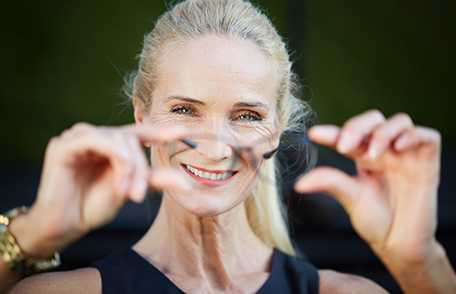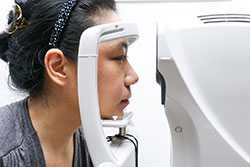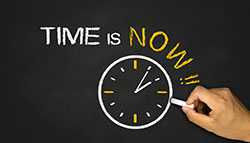Do You See What I See?

Healthy Vision Month is observed each year in May. This is a great time to learn how vision problems can affect you and your loved ones, and what you can do to keep your eyes healthy.
In 2015, approximately 12 million people in the United States had vision impairment, weakening their vision. Women, minority groups, and people with a chronic disease like diabetes are at higher risk for vision impairment. Many people think vision impairment is an unavoidable part of aging, but it doesn’t have to be. Some conditions can be easily corrected with glasses or contact lenses, and some eye diseases can be detected and treated at their very early stages.
Get a comprehensive eye exam from an eye care professional, during which each eye is closely examined for signs of common vision problems and eye diseases. Eye care professionals are the only ones who can really determine if your eyes are healthy.

Schedule an eye exam, especially if it’s been some time since your last one.

The time is now to take steps towards protecting your eyes.
A Woman’s Vision
CDC’s Vision Health Initiative (VHI) and the National Eye Institute’s National Eye Health Education Program are focusing this year’s Healthy Vision Month on women’s eye health, as 2/3 of blindness and visual impairment occur in women. However, when proper prevention and eye care practices are followed, vision health can be achieved. Here are some eye-opening facts:
- Women are at greater risk for vision loss than men.
- Women generally live longer than men, and because many eye conditions such as cataracts and age-related macular degeneration (AMD) are more common with age, women are more likely to be affected.
- Some eye conditions, such as dry eye syndrome, which can result in decreased vision, irritation, redness, and pain, are linked to hormonal changes across the life span of women, from pregnancy to post menopause. As women age, especially as they reach menopause, they can experience hormonal imbalances that can contribute to dry eye syndrome.
An Eye on the Future
Here are some tips to get you started on a journey of improved life-long vision health:
- Schedule a comprehensive dilated eye exam, especially if it’s been some time since your last one.
- Use it or lose it: use protective eyewear or risk losing your vision. Sunglasses, goggles, or other protective eyewear should be used during high-risk indoor activities like working in a lab and outdoor activities like playing sports.
- Talk to your family to learn about your history of eye disease. Many eye diseases are hereditary, and it is important to share your family history with your eye care professional.
- Quit or never start smoking. Research has linked smoking to many eye conditions, like AMD, cataracts and glaucoma, which all can lead to blindness.
- Eat a vision-healthy diet. You might have heard carrots are good for your sight. But did you know that a diet rich in leafy greens, fruits, and even fish also has eye health benefits?
- Reach and maintain a healthy weight to decrease your chances not just for eye disease, but for developing other chronic conditions such as diabetes.
This May, take steps towards protecting your eyes and the vision health of your loved ones by learning about your risk for eye disease. Look out for those eyes!
- Page last reviewed: May 3, 2017
- Page last updated: May 3, 2017
- Content source:
- National Center for Chronic Disease Prevention and Health Promotion, Division of Diabetes Translation
- Page maintained by: Office of the Associate Director for Communication, Digital Media Branch, Division of Public Affairs




 ShareCompartir
ShareCompartir